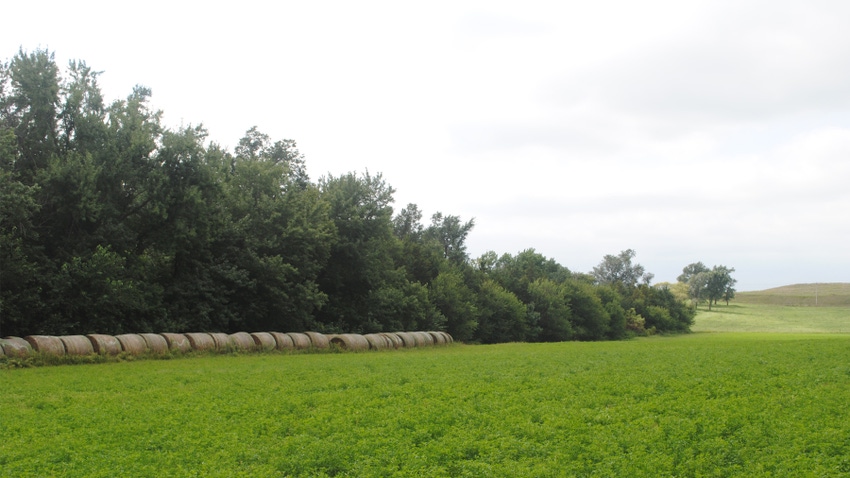
Drought years can take their toll. Insect and disease pressure also can thin even a strong stand of alfalfa. How do you know if it is economically feasible to keep a thinning stand of alfalfa, considering the expense and time it takes to start a good, healthy stand in the first place?
Ben Beckman, a Nebraska Extension educator in the northeast part of the state, says that alfalfa stands usually meet peak production by the second or third year, and yields are lower going into the fourth or fifth year of a stand. This would be especially true for dryland fields.
March impacts
“While the ice and snowstorms in March weren’t exactly what we wanted, especially for those who were calving, it did bring some needed moisture and help bring us closer to normal spring conditions in areas where we’ve continued to stay dry,” Beckman says. “Refilling that soil profile and especially getting fill into the deeper soil layers that mature alfalfa can draw from is going to be critical for a good alfalfa harvest this upcoming year.”
Snow cover has a positive benefit to alfalfa stands, serving as an insulating layer to protect stands over winter, he adds. That means that those portions of alfalfa fields where there was no snow cover during extreme temperature changes this past winter should be monitored closely for winter kill.
“A drop in temperatures in March isn’t helping anything, but alfalfa is a tough plant,” Beckman says, “and with warmer temperatures to return, most plants should pull out of any shock just fine.”
6 considerations
Here are six considerations from Beckman to help producers decide if that thinning alfalfa stand should stay or go.
What year is it? If an alfalfa stand peaks during the second or third season, drought can impact those later stands of alfalfa in the fourth or fifth cutting year, especially because the subsurface moisture that plants were using during the early years is all gone. “Thin stands with densities of less than 55 stems per square foot can open the door for weed encroachment,” Beckman says.
Measure it. “Determining the number of plants or stems per square foot is easy,” he says. “A hay square, measuring 17-by-17 inches square, or a 19-inch-diameter circle, like a hula hoop, work best. Choose five random sites to sample across the field. Count the plants or stems that would be harvested. Typically, anything over 6 inches in height qualifies to determine the count.” Divide those counts in half to get stems and plants per square foot.
What it takes. For established stands, you want four to five healthy plants per square foot, or 55 stems per square foot in a productive, healthy stand. If the counts get below 55, there is a decrease in dry matter production. For new, spring-established stands, 10 to 15 plants or 35 to 55 stems per square foot will be productive.
Lost benefit. There is a lost rotation benefit received by subsequent crops like corn following alfalfa in the rotation. “Not only will alfalfa reduce your nitrogen fertilizer needs by 100 to 150 pounds over the next couple of years,” Beckman, says “but much research also has shown that corn after alfalfa often yields 10 to 20 bushels per acre more than it will even with extra fertilizer.”
High-yielding acres. “If you have alfalfa fields that are past their prime or show winter damage this spring, it might be an excellent time to rotate those fields to a different crop and plant some new, higher-yielding acres to alfalfa,” Beckman says.
Interseed potential. If the new stand is relatively thin, it’s possible to interseed alfalfa into those thin patches, Beckman says. “Alfalfa’s autotoxicity kicks in really strong after plants reach one year of age, but we do have a window before this to strengthen stands,” he says. Another option is a total renovation, but then producers need to think about what crop will be planted next year as they give a break between alfalfa seedings. It also might be possible to plant a double crop of forage species if it is needed, interseed with another species like orchard grass to stretch the usefulness of a stand, or decide to plant a cash-row crop.
You can learn more by contacting Beckman at [email protected].
About the Author(s)
You May Also Like






